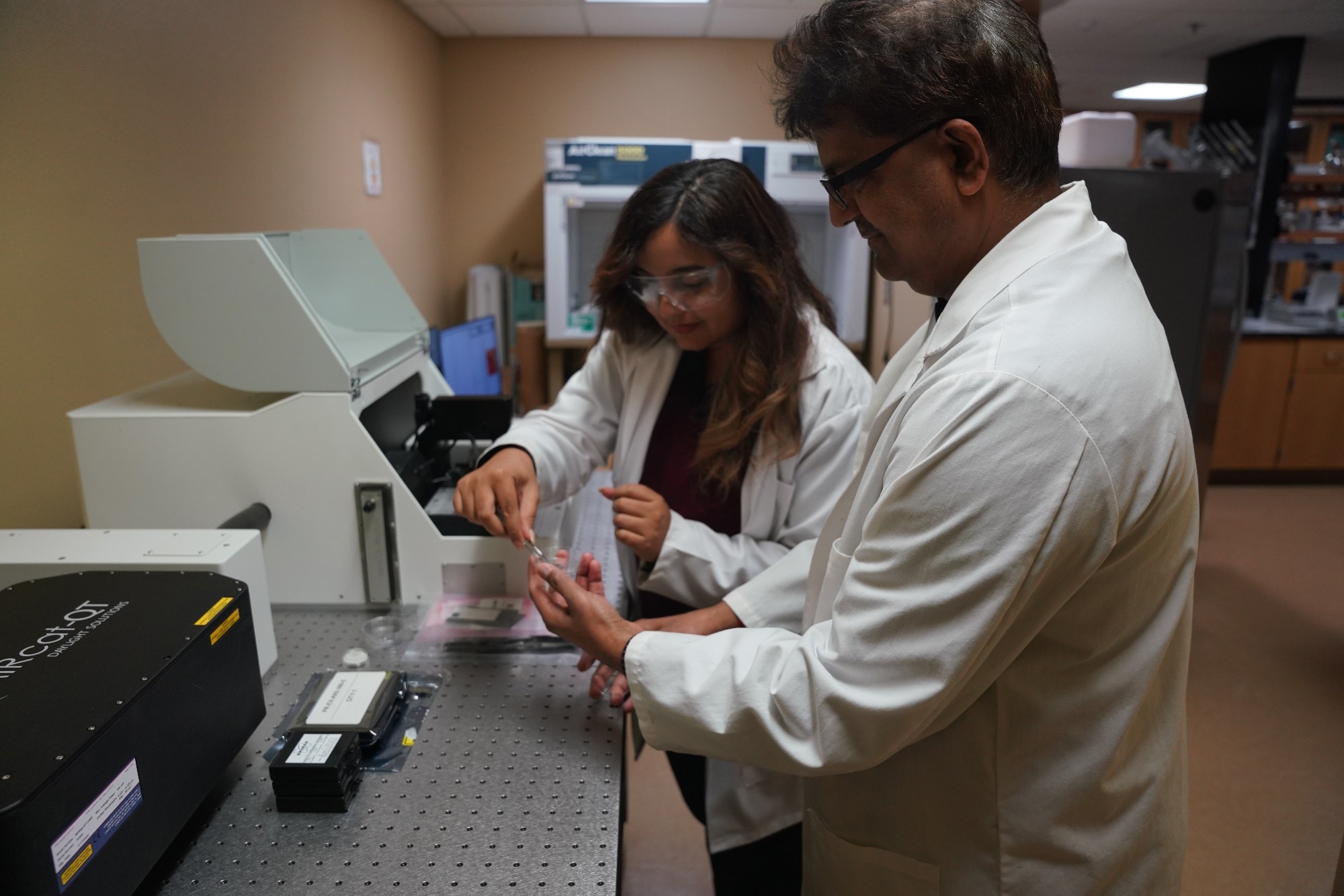Rajesh Sani, Ph.D., a professor in the Karen M. Swindler Department of Chemical and Biological Engineering and in the Department of Chemistry, Biology and Health Sciences at South Dakota Mines, has won an award from the National Science Foundation totaling $683,802, for a new atomic force microscopy-based infrared spectroscopy instrument, more commonly known as the “nanoIR3.”

Image Credit: South Dakota Mines
“This powerful scientific instrument is the only one of its type in the region and it enables detailed imaging of biologic processes in resolutions a thousand times smaller than the thickness of a human hair,” Sani says. The nanoIR3 allows researchers to view cell activity and examine the critical interface between cells and various surfaces.
The nanoIR3 is helping to propel a wide range of research underway across campus related to developing a variety of technologically relevant bio-based materials and energy storage devices that will protect the environment, promote sustainable manufacturing, and enhance the agricultural economy in the state.
Sani is leading or assisting 17 research projects totaling more than $49 million in funded research. He says the nanoIR3 will be used in all his work. “Using nanoIR3, we will be able to answer many questions of biofilms grown from 2D materials,” he says. “The instrument will help South Dakota Mines become a hub for high-resolution AFM-IR integrated nanoIR3 support to researchers in South Dakota and the region.”
Various professors across campus also expressed their excitement at being able to use the nanoIR3.
“Whether you are a researcher, engineer or industrial professional, nanoIR3 can allow you to extend your research into new scientific directions and answer advanced fundamental science and engineering questions at the nanoscale,” says Tanvi Govil, Ph.D., assistant professor in the Karen M. Swindler Department of Chemical and Biological Engineering. As a biological engineer and a user of the nanoIR3, she is very excited about being able to “see” inside microbes and biomolecules at a much finer resolution and with significant chemical detail more effectively than ever.
The nanoIR3 will also have applications beyond chemical and biological engineering.
“The nanoIR3 instrument allows nanoscale structural and chemical characterization of samples and will greatly enhance the materials science research capabilities at South Dakota Mines,” says Bharat Jasthi, associate professor in the Department of Materials and Metallurgical Engineering.
Dr. Robb Winter, Ph.D., research director of the 2DBest Biofilm Center at South Dakota Mines, says the acquisition of the nanoIR3 is a game-changer for both the university and the region.
“For our NSF EPSCoR T1 and DDMD T2 grants, the ability to image and measure mechanical and chemical properties with nano spatial resolution will allow us to discover the Rules of Life of targeted microbes and the interconnection of materials and biological systems,” he says.
For Ramana Gadhamshetty, Ph.D., professor of civil and environmental engineering, the nanoIR3 offers well-designed methods for both understanding and exploring unusual properties of advanced materials that are nanometers in size.
“These capabilities will further improve the competitiveness of South Dakota Mines researchers in fields of 2D materials and their applications in environmental and environmental biotechnology projects, such as those funded by the National Science Foundation, US Air Force and Office of Surface Mining, Reclamation and Enforcement,” he says.
David Salem, Ph.D., director of the Composites and Polymer Engineering (CAPE) Lab, says, “A major obstacle in developing new materials to deliver higher energy density batteries is controlling the chemistry, thickness, stability and uniformity of the Solid-Electrolyte Interface (SEI) layer that forms during charge/discharge cycling.”
By measuring the tiny infrared spectra and mapping the forces on a very small layer within a battery, much can be learned about how it works. This information is critical for making a high-capacity, long-lasting battery.
The nanoIR3 will have use beyond the campus. Industry and academic partners around the region working on bio-based research, including ongoing efforts at the new POET Bioproducts Center, run by Dakota BioWorx, will benefit from this instrument. The instrument is also vital for a major research project on campus aiming to create new biodegradable polymers for use in organic agriculture.